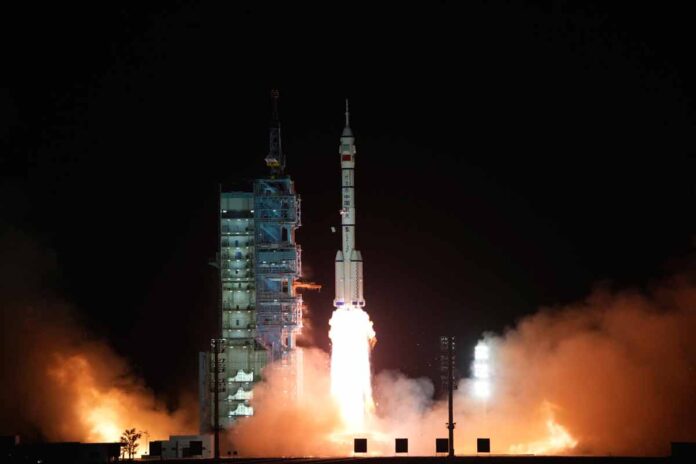On Tuesday, three astronauts launched to China’s nearly finished space station, ushering in the country’s long-term presence in space.
It’s a significant accomplishment for China’s ambitious space program. It has already explored the far side of the moon and Mars. The achievement also signals the end of the International Space Station’s role as the sole location for continuous human occupancy in Earth’s orbit.
The three astronauts launched from the Jiuquan Satellite Launch Center in the Gobi Desert, Inner Mongolia, at 11:08 p.m. local time (10:08 a.m. ET) on Tuesday. The Shenzhou-15 spacecraft will dock with the Tiangong Space Station approximately 6.5 hours after launch.
The arrival of the three astronauts — Fei Junlong, Deng Qingming, and Zhang Lu — will mark the first crew rotation on the space station. With two teams overlapping for five to ten days before the Shenzhou-14 crew returns to Earth.
According to state media, the crew will also conduct over 40 experiments and tests in the fields of space science research, space medicine, and space technology, as well as three to four extravehicular activities. Activities were performed by astronauts in space suits — during the mission.
The space station is expected to last 15 years after construction is completed. According to the CMSA, China intends to launch two crewed missions and two cargo missions to the station each year.
Tiangong, which means “heavenly palace,” is a smaller space station with a modular design similar to the International Space Station. The new space station will typically house three astronauts rather than six.
NASA officials have stated that the International Space Station (ISS), a joint venture of the United States, Russia, Japan, Canada, and the European Space Agency, will be decommissioned in 2030.
Russia has threatened to leave the ISS beginning in 2024. This made its operation difficult, according to Dr. Stefania Paladini, a reader in economics and global security at Birmingham City University in the United Kingdom.
During its lifetime, the new space station is expected to host around 1,000 scientific experiments.
The majority of the experiments on board the Tiangong will involve Chinese research. But the country has invited international researchers to conduct experiments on how cancer tumors react to zero gravity.
Due to US political objections and legislative restrictions, China’s astronauts have long been barred from entering the ISS. CMSA astronauts, on the other hand, have trained alongside their European Space Agency counterparts.
It’s unclear whether China would welcome astronauts from other countries to its space station. But Molly Silk, a doctoral researcher focusing on China’s space program, believes international astronauts will visit in the coming years.
The space station’s two laboratory modules, Wentian and Mengtian, docked earlier this year. Along the Tianhe core cabin, the main living space for the astronauts.
The Mengtian lab was launched by China’s massive Long March 5B rocket. The remnants of which crashed into Earth’s atmosphere in early November.
It was the fourth uncontrolled reentry of a Long March 5B rocket since China’s space agency began flying it. It is due to the vehicle’s lack of the necessary equipment to steer itself to a safe landing.

